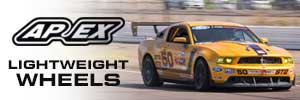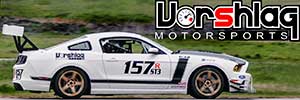An article about mental preparation from my Blog www.trackdayenthusiast.com. Hope you all enjoy reading.
I step out of the Sacramento Executive airport terminal on a hot summer California day. I look across the flight line at a white with faded green stripes 1950s Beechcraft Travel Air. Ring. Ring. My flip phone is ringing in my pocket; I step back in the terminal (away from the airplane noise) to answer an “emergency” call from my realtor. I was in the middle of selling my first house and our contract was in jeopardy. I quickly talk to her about the situation and back out on the flight line I go… But this time I don’t have my usual enthusiasm for the old Beechcraft. I’m focused on the phone call, the house sale, the contract, etc. I quietly go through my preflight inspection and checklist. My instructor is in the right seat and asks a couple times, “Are you okay”? I respond each time with, “Yeah I’m good”. But was I? The entire preflight I am just going through the motions, my brain is thinking about the phone call with my realtor. We taxi out to the runway (training flight, no passengers), receive the takeoff clearance, I push the throttles up to takeoff power and off we go. I lift the twin off the ground at Vr (rotation speed) and begin climbing. My mind is still with the phone call. When we pass through 1,000ft my instructor pulls the #1 throttle to idle (simulating an engine failure). This is a maneuver I’ve practiced many times. I kick the rudder to compensate for the adverse yaw when unexpectedly the nose of the airplane sharply dives down and left. I see the ground through the windscreen and feel the negative Gs in my seat. The plane is starting to spin! With my heart racing I realize I’ve kicked the wrong rudder thus exasperating adverse yaw from the “failed” engine. My training and “seat of the pants” instinct takeover. I immediately apply the correct rudder and aileron input and apply power to the #1 engine. After I recover the plane and safely create some distance between the Travel Air and the ground, I look at my pale faced instructor and say, “I am sorry, that scared the crap out of me, but I just learned a lesson I will keep with me forever”.
You see, I was in no frame of mind to fly an aircraft. I let the realtor phone call completely distract me. In a “normal” flight I probably would’ve gotten away with it by relying on rote memorization and muscle memory to complete the flight. BUT the moment something happened, I nearly crashed. At that moment I promised myself when operating an airplane I would compartmentalize outside distractions and give the aircraft my undivided attention.
Years later in my career I’m descending over a mountain range into Queretaro, Mexico, flying a Boeing 727. I was the First Officer and Pilot Flying. I turn final and line up perfectly on the localizer and glide slope (instrument system that lines the aircraft up to the runway). The air was bumpy but nothing more than light chop. When descending past the final approach fix, we suddenly get a red windshear warning!! (Windshear: an abrupt change in wind direction and velocity.) I immediately slam the JT8D-15 engine throttles to firewall power, maintain configuration, and pitch up to the stick shaker. The captain was flawless and made every call out perfectly. “Decreasing speed, descending 500 feet per minute, pitch 15 degrees….”. I fly the windshear maneuver by the textbook and after an enormous spike in heart rate we pop out of the windshear and the 727 climbs like a rocket with all three engines at firewall power. After safely landing and taxing to the ramp, I perform the proper post-flight inspection and walk inside the terminal to customs. On my long walk across the flight line all I could think about was the lesson learned in the old Beechcraft. Operating aircraft requires mental readiness at all times. Remember: it’s not the mistakes we make in life that define us, it’s what we learn and do with those mistakes that make us the people we are. Learning from a mistake I made very early on in my career shaped the pilot I became.
Now to the track; I’ve stayed true to my promise and transitioned the discipline to the track. I’m unwinding the steering wheel out of turn 7 at Road Atlanta. I am full throttle and rowing through the gears while listening to the howl of my flat 6 Porsche 911. As I crest the slight incline at turn 9, I’m checking my gauges (as I do on every single lap in the same location). I notice 130, 135, 140mph when, without warning, my right rear tire blows. The 911 immediately becomes unstable. I start applying necessary steering input, downshifting, and braking as much as the Brembos will allow without spinning. I manage to slow the car without incident while also giving other drivers the point by. If I had been distracted like I was 15 years prior with the phone call, would the outcome have been the same? I hope so, but that’s not a gamble I’m willing to take. This hobby we love is serious. We are driving 3,000lbs (give or take) machines at excessive speeds. We have to approach it with respect and our full mental attention.
Here’s 3 ways I’ve transitioned my flight deck training to the track. These tips make me a better and safer driver.
Mental readiness: Proper mental preparation is key to a good track day experience. Make sure to get a good night’s sleep and hydrate (it’s amazing how quickly one can dehydrate at a track day). Also, just as I wrote about above, block out any outside distractions. This sport demands our full attention. Put aside any stress, distractions, and worry. It will all be there at the end of the day waiting for you. Another bonus to blocking out distractions is it allows your brain to rest and have a true “mental health” day without the worry and anxiety some of our daily lives evoke.
Remember reality: A few years ago I was at a track day and someone in the paddock came in from an advanced session. They opened the door, threw off their harness, and slammed their helmet down in the seat. The driver was absolutely fuming about his lap times. Trust me when I say I’m just as competitive as anyone, but I thought to myself, why? This is a very expensive hobby and we do it for fun, passion, the thrill of being on track, etc. As a wise old instructor once told me, “The Captain Roger Penske is not in the paddock looking for his next driver”. Lap timers are fun and a great way to improve skill and analyze changes made to the car. But they can also be dangerous. Chasing lap times can stir the “red mist”. Pushing to and beyond our personal limits starts to drastically reduce safety margins. Remember, most of us are in street cars with minimal safety equipment. I approach a track day at 7-8/10ths. I’ll save the 10/10ths driving for when the Captain actually does call me to come drive a true race car.
Prepare: Proper preparation can make for a far more enjoyable day. Not forgetting items and having a properly prepared car can maximize your track time. Make sure you…
Happy tracking,
Nick Stone
(Nick20gtpp)
Flight-Deck to Track
Written By Nick StoneI step out of the Sacramento Executive airport terminal on a hot summer California day. I look across the flight line at a white with faded green stripes 1950s Beechcraft Travel Air. Ring. Ring. My flip phone is ringing in my pocket; I step back in the terminal (away from the airplane noise) to answer an “emergency” call from my realtor. I was in the middle of selling my first house and our contract was in jeopardy. I quickly talk to her about the situation and back out on the flight line I go… But this time I don’t have my usual enthusiasm for the old Beechcraft. I’m focused on the phone call, the house sale, the contract, etc. I quietly go through my preflight inspection and checklist. My instructor is in the right seat and asks a couple times, “Are you okay”? I respond each time with, “Yeah I’m good”. But was I? The entire preflight I am just going through the motions, my brain is thinking about the phone call with my realtor. We taxi out to the runway (training flight, no passengers), receive the takeoff clearance, I push the throttles up to takeoff power and off we go. I lift the twin off the ground at Vr (rotation speed) and begin climbing. My mind is still with the phone call. When we pass through 1,000ft my instructor pulls the #1 throttle to idle (simulating an engine failure). This is a maneuver I’ve practiced many times. I kick the rudder to compensate for the adverse yaw when unexpectedly the nose of the airplane sharply dives down and left. I see the ground through the windscreen and feel the negative Gs in my seat. The plane is starting to spin! With my heart racing I realize I’ve kicked the wrong rudder thus exasperating adverse yaw from the “failed” engine. My training and “seat of the pants” instinct takeover. I immediately apply the correct rudder and aileron input and apply power to the #1 engine. After I recover the plane and safely create some distance between the Travel Air and the ground, I look at my pale faced instructor and say, “I am sorry, that scared the crap out of me, but I just learned a lesson I will keep with me forever”.
You see, I was in no frame of mind to fly an aircraft. I let the realtor phone call completely distract me. In a “normal” flight I probably would’ve gotten away with it by relying on rote memorization and muscle memory to complete the flight. BUT the moment something happened, I nearly crashed. At that moment I promised myself when operating an airplane I would compartmentalize outside distractions and give the aircraft my undivided attention.
Years later in my career I’m descending over a mountain range into Queretaro, Mexico, flying a Boeing 727. I was the First Officer and Pilot Flying. I turn final and line up perfectly on the localizer and glide slope (instrument system that lines the aircraft up to the runway). The air was bumpy but nothing more than light chop. When descending past the final approach fix, we suddenly get a red windshear warning!! (Windshear: an abrupt change in wind direction and velocity.) I immediately slam the JT8D-15 engine throttles to firewall power, maintain configuration, and pitch up to the stick shaker. The captain was flawless and made every call out perfectly. “Decreasing speed, descending 500 feet per minute, pitch 15 degrees….”. I fly the windshear maneuver by the textbook and after an enormous spike in heart rate we pop out of the windshear and the 727 climbs like a rocket with all three engines at firewall power. After safely landing and taxing to the ramp, I perform the proper post-flight inspection and walk inside the terminal to customs. On my long walk across the flight line all I could think about was the lesson learned in the old Beechcraft. Operating aircraft requires mental readiness at all times. Remember: it’s not the mistakes we make in life that define us, it’s what we learn and do with those mistakes that make us the people we are. Learning from a mistake I made very early on in my career shaped the pilot I became.
Now to the track; I’ve stayed true to my promise and transitioned the discipline to the track. I’m unwinding the steering wheel out of turn 7 at Road Atlanta. I am full throttle and rowing through the gears while listening to the howl of my flat 6 Porsche 911. As I crest the slight incline at turn 9, I’m checking my gauges (as I do on every single lap in the same location). I notice 130, 135, 140mph when, without warning, my right rear tire blows. The 911 immediately becomes unstable. I start applying necessary steering input, downshifting, and braking as much as the Brembos will allow without spinning. I manage to slow the car without incident while also giving other drivers the point by. If I had been distracted like I was 15 years prior with the phone call, would the outcome have been the same? I hope so, but that’s not a gamble I’m willing to take. This hobby we love is serious. We are driving 3,000lbs (give or take) machines at excessive speeds. We have to approach it with respect and our full mental attention.
Here’s 3 ways I’ve transitioned my flight deck training to the track. These tips make me a better and safer driver.
Mental readiness: Proper mental preparation is key to a good track day experience. Make sure to get a good night’s sleep and hydrate (it’s amazing how quickly one can dehydrate at a track day). Also, just as I wrote about above, block out any outside distractions. This sport demands our full attention. Put aside any stress, distractions, and worry. It will all be there at the end of the day waiting for you. Another bonus to blocking out distractions is it allows your brain to rest and have a true “mental health” day without the worry and anxiety some of our daily lives evoke.
Remember reality: A few years ago I was at a track day and someone in the paddock came in from an advanced session. They opened the door, threw off their harness, and slammed their helmet down in the seat. The driver was absolutely fuming about his lap times. Trust me when I say I’m just as competitive as anyone, but I thought to myself, why? This is a very expensive hobby and we do it for fun, passion, the thrill of being on track, etc. As a wise old instructor once told me, “The Captain Roger Penske is not in the paddock looking for his next driver”. Lap timers are fun and a great way to improve skill and analyze changes made to the car. But they can also be dangerous. Chasing lap times can stir the “red mist”. Pushing to and beyond our personal limits starts to drastically reduce safety margins. Remember, most of us are in street cars with minimal safety equipment. I approach a track day at 7-8/10ths. I’ll save the 10/10ths driving for when the Captain actually does call me to come drive a true race car.
Prepare: Proper preparation can make for a far more enjoyable day. Not forgetting items and having a properly prepared car can maximize your track time. Make sure you…
- Have a checklist for “what to bring”
- Complete a pre/post track day inspection/servicing on your car. Set a routine for fluid changes, torque checks, brakes, etc.
- Develop a journal for track notes, tire pressures, and car setup
- Find reputable YouTube videos for the track you are driving. Some HPDE instructors have extremely well done videos that will certainly help familiarize you with the track.
Happy tracking,
Nick Stone
(Nick20gtpp)













